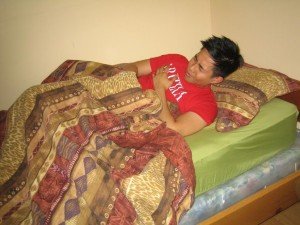Obstructive sleep apnea causes brief pauses in the breathing pattern of the child during sleep. The breathing generally stops due to blockage in the airway. It occurs in 2% of children, usually between the ages of 2-6 years old.
It is important to note that sleep apnea results to several brief awakenings from sleep once the brain detects changes in the oxygen or carbon dioxide in the body and transmit signals to the lungs to try to breathe in. Even though the child might not be aware that he/she is waking up, the disruptions in sleep can result to daytime issues.
What are the causes?

The usual cause of sleep apnea among children is having enlarged tonsils and adenoids that obstruct the airway and breathing while sleeping.
During daytime, the muscles in the neck and head easily keep the airway passages open. While asleep, the muscle tone reduces which allows the tissues to come closer together and the enlarged adenoids and tonsils blocks the airways for periods of time. Other tissues in the neck, nose and tongue might also contribute.
Other causes include the following:
- Narrowed facial structure
- Obesity
- Growth or tumor in the airway (rare)
- Small-sized jaw
- High muscle tone
- History of cleft palate or had undergone pharyngeal flap surgery
- Poor muscle tone
The condition might also be common among children diagnosed with syndromes that change the facial structure such as Down syndrome. Additionally, children with asthma, nasal allergies, frequent upper airway infections and acid reflux are at higher risk.
Indications
- Noisy or loud breathing, snoring or mouth breathing while sleeping
- Bedwetting
- Momentary pauses in breathing while sleeping or difficulty breathing during sleep
- Profuse sweating while sleeping
- Restless sleep
- Inattentiveness and poor focus at work or school
- Sleeping in odd positions
- Morning headaches
- Excessive sleepiness during daytime
- Irritability, aggressiveness and other behavioral issues
- Poor performance academically
Management of obstructive sleep apnea
Sleep apnea can be managed in 4 main methods which depends on the cause of the obstruction.
- Lifestyle modifications – cutting down weight via exercise and diet can be helpful in the management of overweight children
- Surgery – the removal of the enlarged adenoids and tonsils might be done. In some cases, other types of surgery are required among children with structural irregularities in the head and neck region.
- Medications – drugs might be useful in keeping the airways clear
- Continuous positive airway pressure (CPAP) – this involves wearing a mask over the nose while sleeping. This mask is linked to a small-sized portable device that drives air via the nasal passages and into the airway. The air pressure produced by the device keeps the airway open and enables the individual to breathe normally while sleeping.
